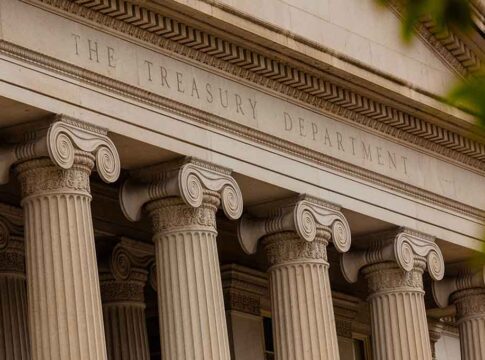Donald Trump escalates his attack on Federal Reserve Chair Jerome Powell, claiming his “termination cannot come soon enough” as the battle over economic policy and central bank independence intensifies. Powell warned that Trump’s proposed tariffs could increase inflation and slow economic growth, creating potential “stagflation.” Legal experts note the Federal Reserve Act only allows removal of Fed governors “for cause,” not policy disagreements.
Trump’s Escalating Criticism of Powell
President Donald Trump has intensified his criticism of Federal Reserve Chair Jerome Powell, declaring that Powell’s “termination cannot come soon enough.” The comments came after Powell expressed concerns about Trump’s proposed tariff policies, suggesting they could increase inflation and slow economic growth. Trump’s public rebuke represents an unprecedented challenge to the traditional independence of the Federal Reserve from political influence.
During a meeting with Italian Prime Minister Giorgia Meloni, Trump made his intentions clear regarding Powell’s position at the Fed. “If I want him out, he’ll be out of there real fast, believe me,” Trump stated. He followed this with a direct assessment of his feelings toward the Fed Chair: “I’m not happy with him.” These statements have raised concerns about potential political interference in monetary policy decisions since becoming president.
TRUMP ON POWELL:
– HE’S PLAYING POLITICS & TRYING TO BE CUTE
– EUROPE IS CUTTING RATES SO WHY AREN’T WE
– I AM NOT HAPPY WITH POWELL & HE WILL LEAVE IF I ASK HIM TO
Trump wants rate cuts immediately…but Powell thinks the tariff inflation is too much of a concern to cut. pic.twitter.com/FK6z4rDTqi
— amit (@amitisinvesting) April 17, 2025
The Federal Reserve’s Independence
The Federal Reserve was designed to operate independently from the executive branch to prevent political pressures from influencing monetary policy decisions. Powell has emphasized this separation, stating that “our independence is a matter of law.” The Federal Reserve Act only permits the removal of a Fed governor “for cause,” which historically has been interpreted as serious misconduct rather than policy disagreements.
“No,” Powell responded when previously asked if he would resign if requested by Trump, underlining his commitment to the Fed’s political independence.
Powell’s current term extends until May 2026. Ironically, Trump himself nominated Powell to the Fed Chair position in 2017, and Biden reappointed him in 2022. While a recent Supreme Court case could potentially make it easier for presidents to remove officials at independent agencies, legal experts question whether such changes would apply to the Federal Reserve’s unique structure.
Trump just casually threatened the Fed Chair—on live TV.
REPORTER: Powell says he won’t step down, even if you ask.
TRUMP: He’ll be gone. If I want him out, he’s out. I’m not happy, and when I’m not happy—people disappear. Fast. pic.twitter.com/PniCQeCUrO— Shazi (@ShaziGoalie) April 17, 2025
The Economic Policy Clash
At the heart of the disagreement is Trump’s belief that “there is essentially no inflation,” despite data showing inflation reached 9.1% in 2022 before the Fed’s aggressive rate hikes brought it down to the current 2.4%. Powell’s recent warnings about potential “stagflation”—where” inflation rises while economic growth slows – have particularly angered Trump, who views such statements as undermining his economic policy proposals.
“Jerome Powell of the Fed, who is always TOO LATE AND WRONG, yesterday issued a report which was another, and typical, complete ‘mess!'” Trump wrote in his criticism of the Fed Chair.
The proposed tariffs at the center of this dispute could have significant economic implications. Yale University’s Budget Lab estimated that tariff-induced inflationary pressures could cost the average U.S. household $4,900. Meanwhile, Wall Street institutions like Goldman Sachs have increased their recession probability estimates, and consumer surveys indicate growing pessimism about job prospects and inflation control.
Market Implications and Future Outlook
The public clash between Trump and Powell has created uncertainty in financial markets, which traditionally value the predictability and independence of Federal Reserve policy. Trump and his economic team desire lower long-term interest rates to reduce borrowing costs, although the Fed directly controls only short-term rates. This fundamental misalignment in economic approach has set the stage for what could become a significant policy battle.
The Fed currently faces the delicate balance of managing inflation while preventing economic slowdown. Raising interest rates could further stifle borrowing and slow the economy, while lowering rates could increase spending and potentially worsen inflation. Powell’s policy decisions in the coming months will likely continue to draw scrutiny from Trump.
Sources:
- Trump suggests he can remove Fed Chair Powell and says he’s ‘not happy’ with him over interest rates


